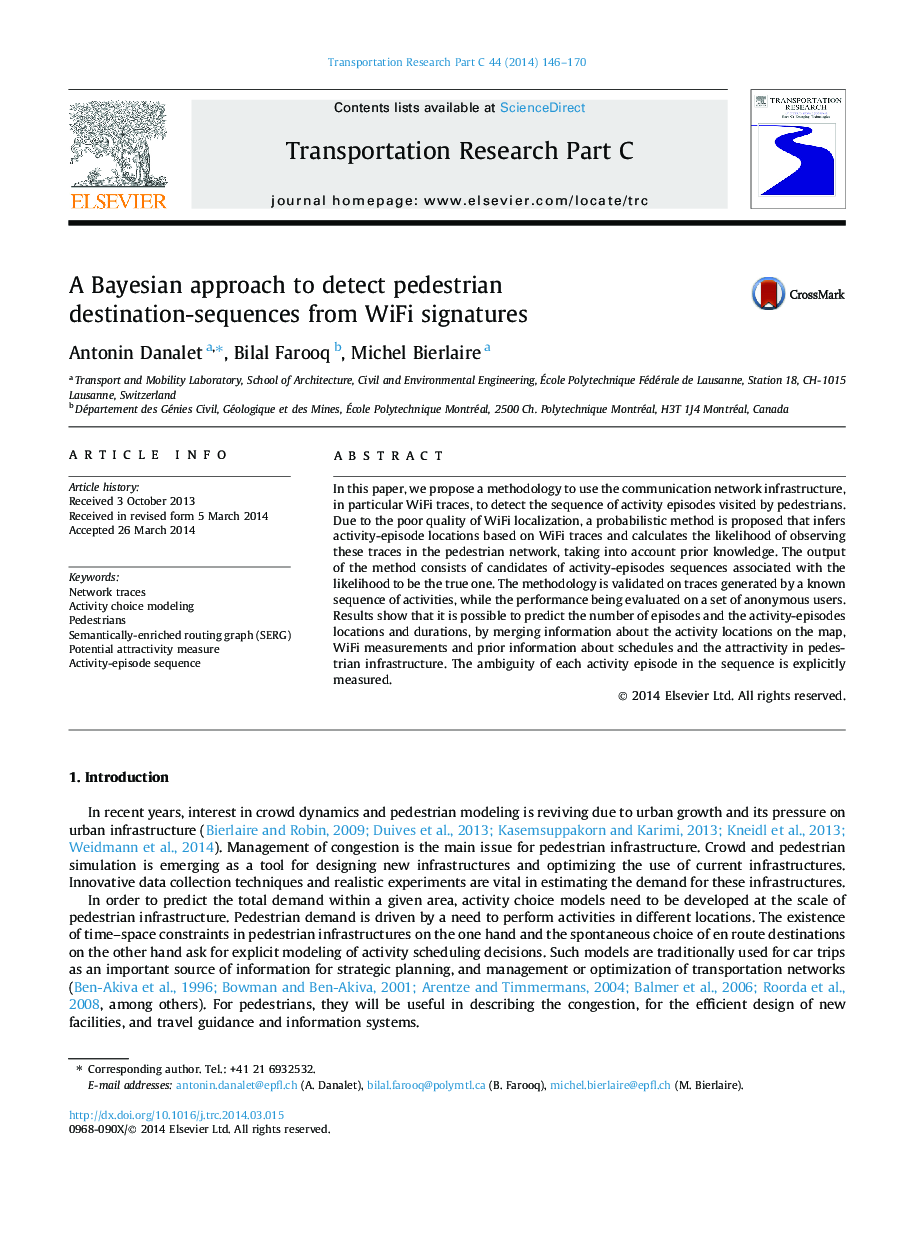| Article ID | Journal | Published Year | Pages | File Type |
|---|---|---|---|---|
| 524792 | Transportation Research Part C: Emerging Technologies | 2014 | 25 Pages |
•WiFi traces are used to detect pedestrian activity-episode sequence.•They are merged with other data: attractivity, map and time constraints.•Ambiguity of the data is explicitly modeled.•Novel method to generate candidate activity-episode sequences and their likelihood.•Detailed validation and sensitivity analysis is performed.
In this paper, we propose a methodology to use the communication network infrastructure, in particular WiFi traces, to detect the sequence of activity episodes visited by pedestrians. Due to the poor quality of WiFi localization, a probabilistic method is proposed that infers activity-episode locations based on WiFi traces and calculates the likelihood of observing these traces in the pedestrian network, taking into account prior knowledge. The output of the method consists of candidates of activity-episodes sequences associated with the likelihood to be the true one. The methodology is validated on traces generated by a known sequence of activities, while the performance being evaluated on a set of anonymous users. Results show that it is possible to predict the number of episodes and the activity-episodes locations and durations, by merging information about the activity locations on the map, WiFi measurements and prior information about schedules and the attractivity in pedestrian infrastructure. The ambiguity of each activity episode in the sequence is explicitly measured.
